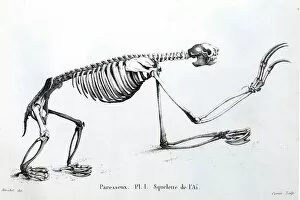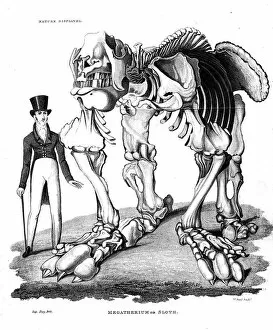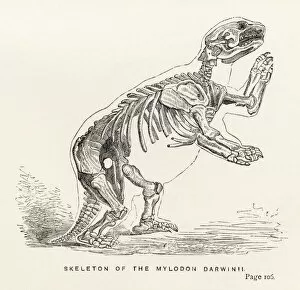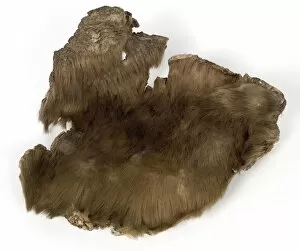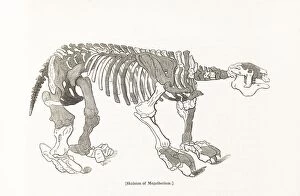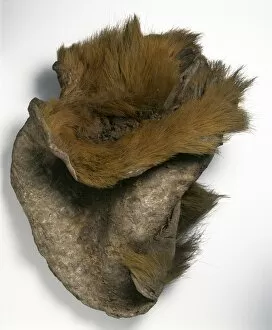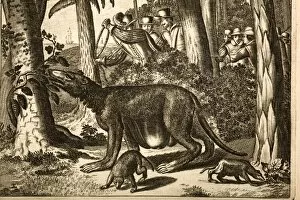Ground Sloth Collection
The ground sloth, a fascinating creature from the past, continues to captivate our imagination
All Professionally Made to Order for Quick Shipping
The ground sloth, a fascinating creature from the past, continues to captivate our imagination. Its existence is evidenced by various artifacts and remains that have been discovered over the years. One such finding is the 1812 sloth skeleton meticulously studied by Cuvier, shedding light on its anatomy and characteristics. Intriguingly, even their droppings or coprolite have provided valuable insights into their diet and behavior. These prehistoric animals roamed the Earth long before us, as depicted in engravings showcasing their impressive size and stature. Renowned artist Robert Taylor Pritchett beautifully captured the essence of these ancient giants in his illustrations of the Mylodon Darwinii and Megatherium skeletons from c1885. These colossal creatures were truly awe-inspiring with lengths reaching up to 3 meters and weighing around 1000 kilos. Charles Darwin himself documented these remarkable species in his book "Journal of Researches, " published in 1890. The skeleton of Mylodon Darwinii featured prominently within its pages, highlighting its significance as an extinct ground sloth from Patagonia. Notably, another masterpiece showcased within Darwin's journal was the Megatherium skeleton—an extinct giant ground sloth that once roamed our planet. These skeletal remnants serve as a testament to their former existence and provide invaluable information about Earth's history. Beyond bones alone, we catch glimpses of what they might have looked like through preserved samples skin. The texture and appearance offer further clues about these magnificent creatures' physical attributes. As we marvel at these relics from a time long gone by, it becomes clear that understanding our planet's past inhabitants enriches our knowledge about life itself. The story told by each artifact brings us closer to unraveling mysteries hidden deep within Earth's history—a journey made possible thanks to discoveries like those surrounding the captivating world of ground sloths.


